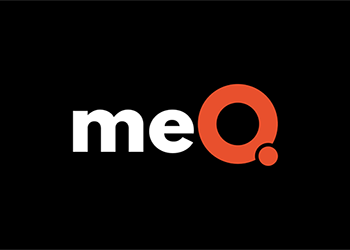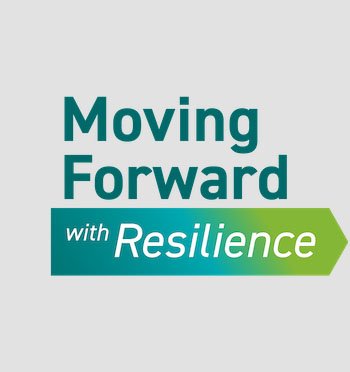Lessons Learned from the Conference (and 2020)
By gathering a community of expert workforce leaders we were able to explore how employers are transforming challenges into opportunities for positive change. The common thread: Resilience.
By gathering a community of expert workforce leaders we were able to explore how employers are transforming challenges into opportunities for positive change. The common thread: Resilience.
Moving Forward with Resilience, our 1-day virtual event, left us with such a sense of motivation. By gathering a community of expert workforce leaders we were able to explore how employers are transforming challenges into opportunities for positive change. The common thread: Resilience.
We decided to host this event because everyone is talking about resilience, but what does it really mean in the context of work? Jan Bruce, CEO and Co-founder of meQuilibrium, asserts that resilience is foundational to business; helping employers develop the adaptive capacity essential to moving their organizations forward. Backed by science, resilience is not only good for your people, it’s what’s right for your business.
Here are our top takeaways from the event.
#1 Resilience can be learned and embedded into culture.
Dr. Andrew Shatté, Chief Knowledge Officer and Co-founder of meQuilibrium, reminded us that organizations can teach employees how to be more resilient and quantify the success of those efforts. However, for individuals to flourish, the organization needs to take steps to make the culture align. He discussed the 7 aspects of organizational culture that are crucial to optimizing individual resilience: mentoring, integrity of the system, transparency, open communication, corporate values, positivity, and the power of meaning, mission, & purpose.
“Our goal is to make everyone more resilient, across the world. And the key is applying it in everyday moments. I think about resilience as evergreen, but every so often there are moments where it will really bloom and now is one of those moments.” – Andrew Shatté
#2 Collective care can strengthen our resilience and advance racial equity.
Dr. S Atyia Martin, CEM, CEO and Founder of All Aces, Inc. introduced us to the notion that we have to take care of each other, in order to take care of ourselves. By holding employees accountable for taking care of themselves and others is how organizations can strengthen resilience and advance racial equity. Dr. Martin said, “Racism is a system with complicated pieces that facilitates larger actions. Us as people, we’re part of this system. When we forget that, it becomes problematic because it’s harder for us to see that we can be passive actors of oppression and racism, even if not intentionally.”
To make a real change, Dr. Martin shared, “The organizational culture, how we do the work – this helps be transparent and accountable. It’s a messier process, but comes to better decisions and outcomes. Build our skills so we can be a part of the process to move forward. We must be more inclusive because not everything can be a democratic process.”
#3 Company culture and employee well-being go hand-in-hand.
Workforce leaders from Silicon Valley Employers Forum, Synopsys, and PayPal talked about specific strategies they use to support employee well-being, including child care and family care, awareness around programs that are available, and making connections to local services and resources to ensure they’re getting what they need. These forward-thinking tech companies understand the importance of a supportive company culture for strengthening well-being, and they invest time to ensure employees know how to navigate their options.
#4 You can make a business case for resilience.
Qualcomm’s Melissa Real and Brad Smith, meQuilibrium’s Chief Science Officer provided attendees with actionable insights on how to communicate the business value of resilience to key stakeholders. Their strategies help organizations use the right data to make a case for investing in both physical and mental well-being. For instance, as they progress from their awareness phase to action phase, Melissa shared, “we were focused on empathy and senior leaders scored higher than frontline or individual contributors. This raised questions on whether empathy was important to one’s career development and an opportunity as individuals advance into leadership roles.”
Data can help us think differently about the way we structure work and design for well-being. Recent data from a meQuilibrium study reveals a 10x increase in job stress among employees who feel unsupported by their employer in contrast to those who felt strongly supported. Unsupported employees are more likely to experience disordered sleep, symptoms of burnout, and reduced motivation, all of which lead to poor performance.
#5 Now is the time to lean-in and lead.
David Casey, Fortune 5 VP of Workforce Strategies and Chief Diversity Officer inspired us to embrace adversity and to take the lead. It’s critical for leaders to channel their personal insights into actionable strategies to empower their employees. During these challenging times, the organizations that lean in and choose to fail fast are the ones that will thrive.
“I took on accountability to learn everything that I could learn to move my organization in the right direction. As we think about resilience, use a two part equation. One part is the behaviors – how we expect people to show up. The other component is helping people tap into their thinking and insights, to understand the why. We should challenge ourselves as organizations to focus more on this part.” – David Casey
Watch the conference on-demand here.

As the #1 workforce resilience platform, meQ pinpoints and addresses workforce well-being and performance risks at scale, with a full suite of interventions.
Tags conference, Moving forward, resilience

Maximize the potential of individuals, including yourself, in a way that empowers your business to move forward with resilience. Talk with one of our resilience experts today.